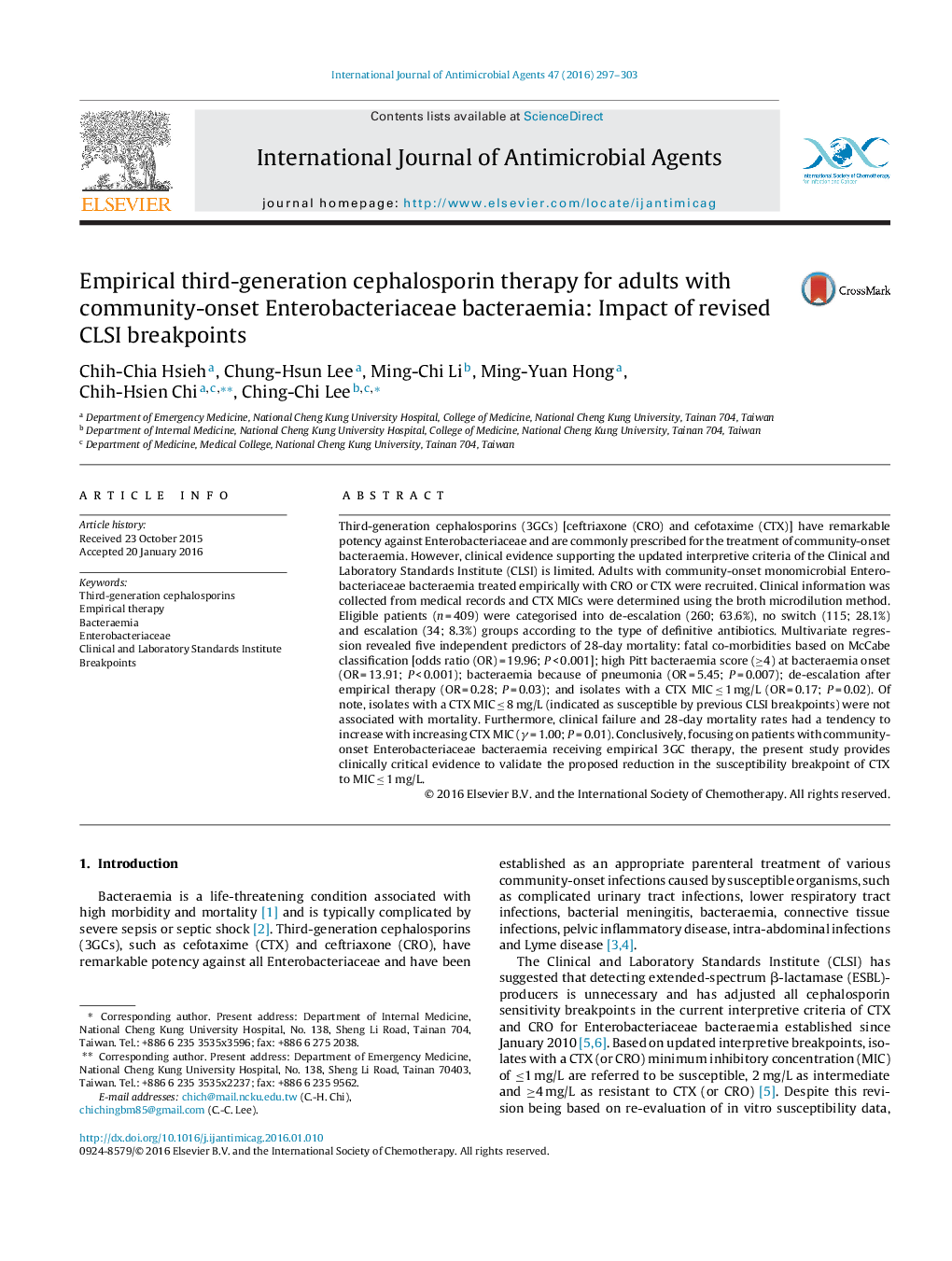| Article ID | Journal | Published Year | Pages | File Type |
|---|---|---|---|---|
| 6117594 | International Journal of Antimicrobial Agents | 2016 | 7 Pages |
Abstract
Third-generation cephalosporins (3GCs) [ceftriaxone (CRO) and cefotaxime (CTX)] have remarkable potency against Enterobacteriaceae and are commonly prescribed for the treatment of community-onset bacteraemia. However, clinical evidence supporting the updated interpretive criteria of the Clinical and Laboratory Standards Institute (CLSI) is limited. Adults with community-onset monomicrobial Enterobacteriaceae bacteraemia treated empirically with CRO or CTX were recruited. Clinical information was collected from medical records and CTX MICs were determined using the broth microdilution method. Eligible patients (n = 409) were categorised into de-escalation (260; 63.6%), no switch (115; 28.1%) and escalation (34; 8.3%) groups according to the type of definitive antibiotics. Multivariate regression revealed five independent predictors of 28-day mortality: fatal co-morbidities based on McCabe classification [odds ratio (OR) = 19.96; P < 0.001]; high Pitt bacteraemia score (â¥4) at bacteraemia onset (OR = 13.91; P < 0.001); bacteraemia because of pneumonia (OR = 5.45; P = 0.007); de-escalation after empirical therapy (OR = 0.28; P = 0.03); and isolates with a CTX MIC â¤Â 1 mg/L (OR = 0.17; P = 0.02). Of note, isolates with a CTX MIC â¤Â 8 mg/L (indicated as susceptible by previous CLSI breakpoints) were not associated with mortality. Furthermore, clinical failure and 28-day mortality rates had a tendency to increase with increasing CTX MIC (γ = 1.00; P = 0.01). Conclusively, focusing on patients with community-onset Enterobacteriaceae bacteraemia receiving empirical 3GC therapy, the present study provides clinically critical evidence to validate the proposed reduction in the susceptibility breakpoint of CTX to MIC â¤Â 1 mg/L.
Keywords
Related Topics
Life Sciences
Immunology and Microbiology
Applied Microbiology and Biotechnology
Authors
Chih-Chia Hsieh, Chung-Hsun Lee, Ming-Chi Li, Ming-Yuan Hong, Chih-Hsien Chi, Ching-Chi Lee,
